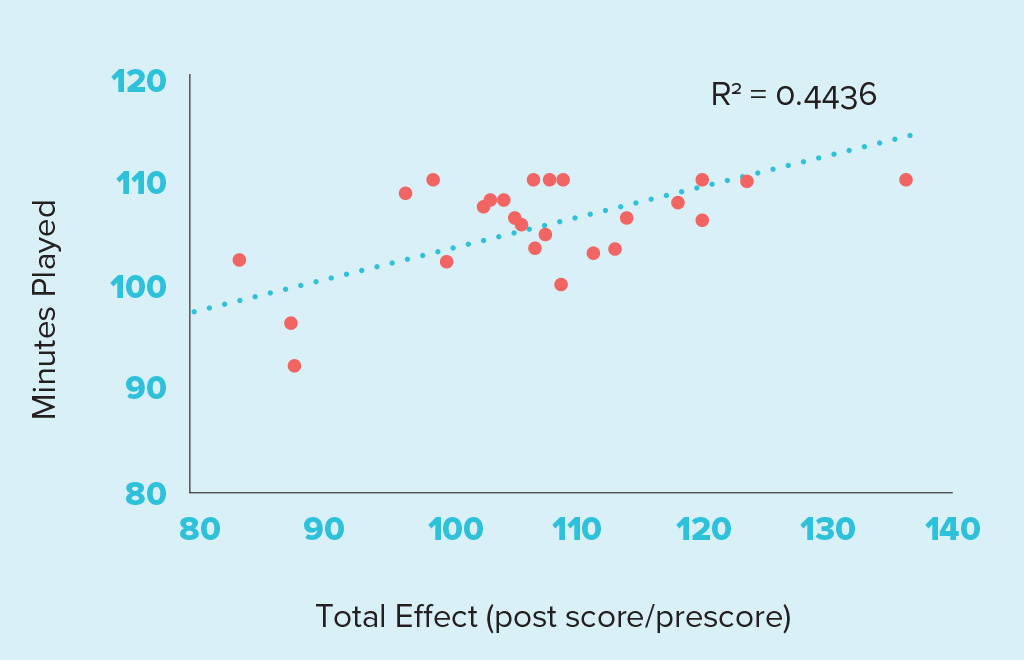Robbin Gibb
Jade Oldfield
Department of Neuroscience, University of Lethbridge
Cayley Fleischman
Claudia Gonzalez
Department of Kinesiology, University of Lethbridge
Rayn Perry
Department of Kinesiology, University of B.C., Okanagan
A 2023 communique released by the University of Calgary School of Public Policy (Koftinoff et al. 2023) stated that “mental health concerns among children and youth are increasing, while poor mental health remains one of the largest threats to childhood in Alberta.”
Youth struggling with mental health challenges often turn to drugs and/or alcohol, and according to the Centre for Addiction and Mental Health (2024), homelessness is also associated with substance use disorders and mental health issues, and more than 40,000 children and youth in Canada experience homelessness each year.
In order to deal with the growing issue of both addictions and homelessness, it is clear that more preventative services must be offered. The school system is one of the best places to deliver services to support youth under duress, but programming to directly address mental health concerns is limited. Strengthening executive functions (EFs) in adolescents can offset some of these mental health issues by building resiliency or the capacity to withstand or recover from adversity (Wenzel and Gunnar 2013).
EFs are a set of skills that allow an individual to set goals, then systematically engage in behaviour that will move them toward achieving those goals. It is widely accepted that there are three key elements to EF: shifting or cognitive flexibility, updating or working memory and inhibition (Miyake et al. 2000). Some researchers believe that, in addition to these three core processes, EF includes more complex attributes such as self-regulation, attentional control, planning, problem solving and goal setting (Blair and Razza 2007; Diamond and Lee 2011).
Interestingly, EF is not innate but rather learned over time from birth onward and there appear to be two windows of rapid EF acquisition during development. The first window is in the preschool years and the second window is from age 12 to about 25 years (National Scientific Council on the Developing Child 2011).
Previously, through research conducted in preschool classrooms, our team demonstrated that EF skills could be promoted within students through teacher-led play using a play curriculum that was specifically designed to build such skills (Coelho et al. 2020; Gibb et al. 2015; Gibb et al. 2021) and that such activities prepare students for entrance into the K–12 school system.
Building on the success of that work, in 2022 we designed a play curriculum for adolescents and piloted it over the summer at our local Youth One and YMCA. Using feedback from teen participants, we dropped the games they disliked and developed a final play curriculum comprised of 10 games that offered both seated and active play opportunities and challenged EF in multiple domains.
Our research aimed to determine if this play curriculum, when delivered in classrooms in middle school, would be effective in improving EF in the student participants. To this end, 24 students (9 female) in a Grade 7 classroom were tested before and after the play program on their executive function (attention, working memory, cognitive flexibility and behavioural inhibition) using the NIH Toolbox assessment tool (Rhodes et al. 2013). A control group of students from a separate Grade 7 classroom (27 participants, 10 female) underwent testing in the pre- and post-program period but did not play the games in the classroom. Teachers were asked to journal the amount of time each student was engaged with the play activities. This would account for any student absences during program delivery. Importantly, teachers were active participants in the classroom play. Our hypothesis was that engaging with teachers in the play curriculum would improve EF in the student participants. A one-way analysis of variance was used to determine statistical significance using group as the dependent variable.
Despite the limited number of female participants in this pilot study, we saw significant improvements post-program in females. Females were better on two tests of EF (Flanker and Stroop) and, importantly, in the overall performance when all tests were considered (see Fig. 1). Males were not different than control participants in any of the EF tests. We interpret these data to mean that we may have been ahead of the optimal timing for puberty-induced brain plasticity in the males as they are typically behind females in puberty by one to two years (13 in girls, 14 in boys; Khan 2019). A significant correlation was seen with the amount of time playing the games and overall improvement in EF scores in the experimental group (see Fig.2).
Figure 1.

Figure 2.

In addition to the objective EF tests, we also solicited feedback from teachers on the play curriculum. The teacher who was actively involved in the play reported that they developed stronger relationships with their students over the course of the play program. They felt that this enhanced their classroom management and made curriculum delivery more effective. An unexpected additional finding was that students had stronger relationships with each other after engaging in this classroom play.
Positive nurturing relationships are a consistent factor for building and maintaining a healthy brain through the lifespan. We believe that offering intentional, teacher-led play opportunities in the classroom provides a unique opportunity to develop the very relationships that will serve to optimize brain health for both students and teachers. Better EF promotes better mental health and resilience. When we work on building executive functions in adolescents, we are establishing brain connectivity that will help support academic success, physical and mental health, and later life success (Moffitt et al. 2011).
References
Blair, C., and R. P. Razza. 2007. “Relating Effortful Control, Executive Function, and False Belief Understanding to Emerging Math and Literacy Ability in Kindergarten.” Child Development 78: 647–663. https://doi.org/10.1111/j.1467-8624.2007.01019.x.
Centre for Addiction and Mental Health (CAMH). 2024. “Launching the First… Comprehensive Mental Health and Addictions Resource for Homeless Youth Service Providers.” CAMH website. www.camh.ca/en/camh-news-and-stories/launching-the-first-comprehensive-….
Coelho, L., A. Amatto, C. Halliwell, C. L. R. Gonzalez and R. L. Gibb. 2020. “Building Executive Function in Pre-School Children Through Play: A Curriculum.” International Journal of Play 9, no. 1: 128–142. https://doi.org/10.1080/21594937.2020.1720127.
Diamond, A., and K. Lee. 2011. “Interventions shown to Aid Executive Function Development in Children 4–12 Years Old.” Science 333: 959–964. www.ncbi.nlm.nih.gov/pmc/articles/PMC3159917.
Gibb, R., L. Coelho, N. A. van Rootselaar, C. Halliwell, M. MacKinnon, I. Plomp and C. L. R. Gonzalez. 2021. “Promoting Executive Function Skills in Preschoolers Using a Play-Based Program.” Frontiers in Psychology vol. 12. https://doi.org/10.3389/fpsyg.2021.720225.
Gibb, R., N. Piquette, A. Harker, S. Raza and B. Rathwell, B. 2015. “Building Adult Capability with the Intent to Increase Executive Function and Early Literacy in Preschool Children.” Early Childhood Education 43, no. 1: 21–26.
Hodes, R. J., T. R. Insel, S. C. Landis and NIH Blueprint for Neuroscience Research. 2013. “The NIH Toolbox: Setting a Standard for Biomedical Research.” Neurology 80, S1. https://doi.org/10.1212/WNL.0b013e3182872e90.
Kahn, L. 2019. “Puberty: Onset and Progression.” Pediatric Annals 48, no. 4: 141–145. https://doi.org/10.3928/19382359-20190322-01.
Koftinoff, J., M. Mungunzal Amarbayan, K. Wittevrongel, M. Santana and J. Zwicker. 2023. “Measuring Patient-Oriented Outcomes in Children and Youth with Mental Health Concerns:
Albertan Key Informant Perspectives.” University of Calgary School of Public Policy Communique 16, no. 1. https://doi.org/10.11575/sppp.v16i1.75412.
Miyake, A., N. P. Friedman, M. J. Emerson, A. H. Witzki, A. Howerter and T. D. Wager. 2000. “The Unity and Diversity of Executive Functions and Their Contributions to Complex ‘Frontal Lobe’ Tasks: A Latent Variable Analysis.” Cognitive Psychology 41, no. 1: 49–100. https://doi.org/10.1006/cogp.1999.0734.
Moffitt, T. E., L. Arseneault, D. Belsky, N. Dickson, R. J. Hancox, H. Harrington, R. Houts, R. Poulton, B. W. Roberts, S. Ross, M. R. Sears, W. M. Thomson and A. Caspi. 2011. “A Gradient of Childhood Self-Control Predicts Health, Wealth and Public Safety.” Proceedings of the National Academy of Science (PNAS) 108, no. 7: 2693–2698. https://doi.org/10.1073/pnas.1010076108.
National Scientific Council on the Developing Child. 2011. “Building the Brain’s ‘Air Traffic Control’ System: How Early Experiences Shape the Development of Executive Function.” Center on the Developing Child, Harvard University website. https://developingchild.harvard.edu/resources/building-the-brains-air-t….
Odgers, C., A. Caspi, D. S. Nagin, A. R. Piquero, W. S. Slutske, B. J. Milne, N. Dickson, R. Poulton and T. E. Moffitt. 2008. “Is It Important to Prevent Early Exposure to Drugs and Alcohol Among Adolescents?” Psychological Science 19, no. 10: 1037–1044. https://doi.org/10.1111/j.1467-9280.2008.0219.
Wenzel, A. J., and M. R. Gunnar. 2013. “Protective Role of Executive Function in High-Risk Environments.” Encyclopedia on Early Childhood Development. https://www.child-encyclopedia.com/pdf/expert/resilience/according-expe….


